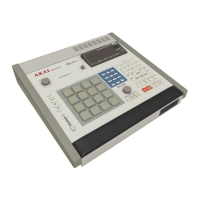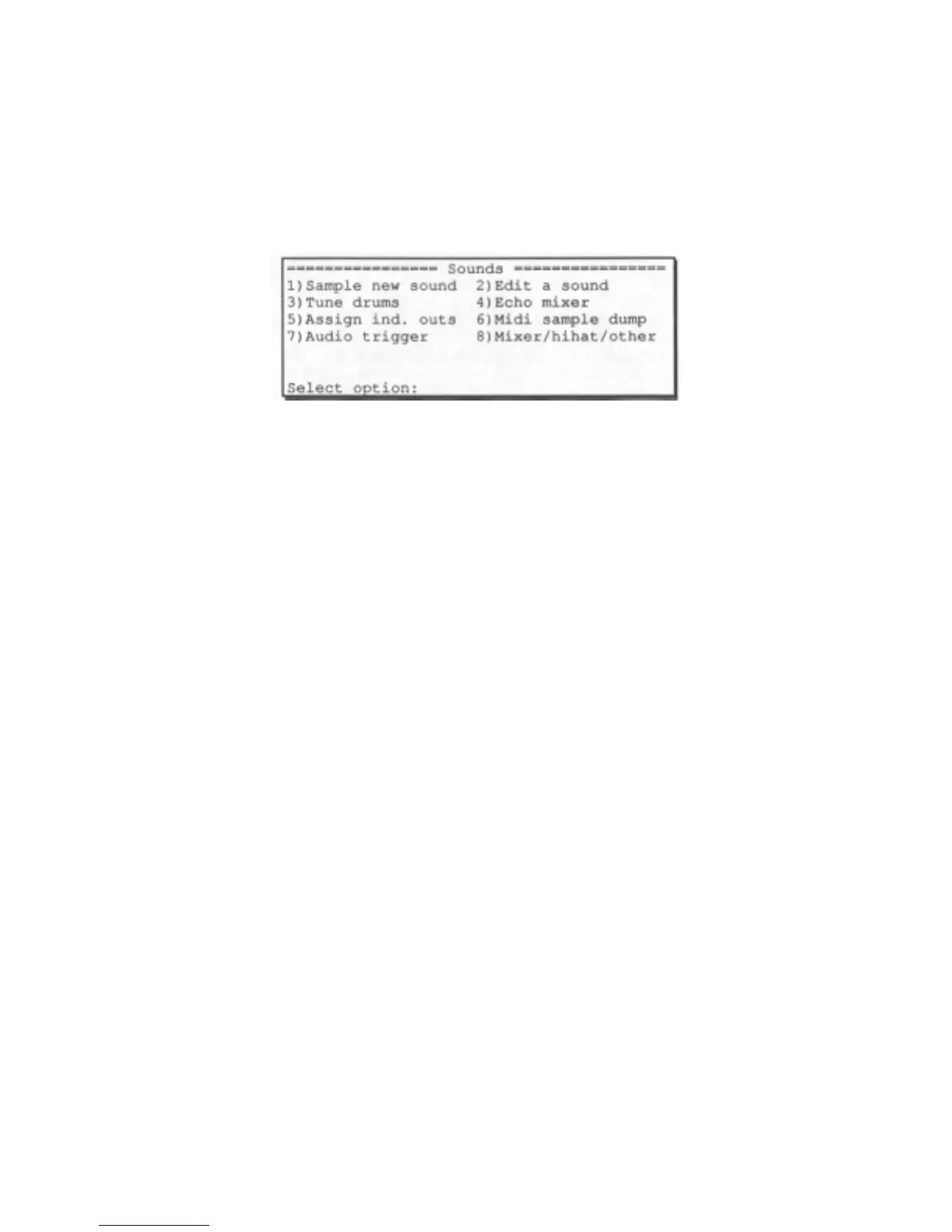Section 6: Sampling and editing sounds
125
The SOUNDS key provides access to all functions associated with the
creation, editing and tuning of drum sounds. When the SOUNDS key is
pressed, this screen appears:
Press a single number to select one of the displayed options. The
screens which follow are described in the following sections.
This section of the manual does not describe the process of loading or
saving sounds to disk. To learn how to do these operations, consult the
"Disk" section of this manual.
NOTE: As with all samplers, all sounds are lost when the power is
removed. This means that you must load in sounds from a sounds disk
every time the MPC60 is turned on, and you must save any edited or newly
sam
led sounds to disk
or the chan
es will be lost!

